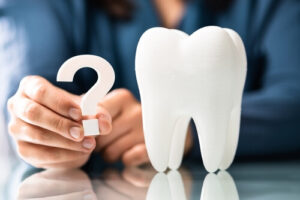Embarking on a journey through the nuanced world of dental health, we often encounter mysteries that delve deeper than the surface, such as black spots on teeth that aren’t cavities. These puzzling spots often send individuals spiraling into a well of questions, perplexed about the origins and implications of these dental anomalies.
Are they harbingers of a concealed dental issue or merely benign occurrences that pose no significant threat to oral health?
These spots, often unnoticed until a curious glance in the mirror brings them to our attention, warrant a closer look, inviting us to delve deeper into the labyrinth of possibilities they present.
Journey with us as we navigate the intricate tapestry of oral health, probing into the unexpected, exploring the uncharted territories beneath the surface of black spots on teeth that aren’t cavities, and unveiling the mysteries concealed within our smiles.
Are black spots on your teeth always cavities?
The presumption that black spots on your teeth invariably denote cavities is common, yet it’s not consistently accurate. While cavities often present as conspicuous dark spots, it’s crucial to acknowledge that not all black or dark spots on your teeth are rooted in decay.
Various factors, such as staining from foods and beverages, tartar buildup, or specific dental materials like silver amalgam, can also manifest as black spots. Moreover, intrinsic factors like certain antibiotics or excessive fluoride exposure during tooth development might contribute to tooth discoloration.
Therefore, while black spots can indicate a cavity, it is equally plausible for them to emerge from many other causes, underscoring the importance of professional dental evaluations to ascertain their precise origin and implement appropriate interventions.
Causes of dark spots on teeth
Navigating the myriad aspects of oral health can sometimes leave us peering into our reflections, puzzled by the unexpected, such as the emergence of dark spots on teeth. While often immediately associated with cavities, these spots might originate from various sources, shedding light on the subtle nuances and complexities of our dental health.
Let’s embark on a meticulous journey to explore these common causes, unwrapping the layers behind the enigmatic dark spots.
- Tooth Decay and Cavities: A seemingly obvious culprit, tooth decay, often surfaces in the form of black spots and cavities, signifying the degradation of the tooth’s enamel and its internal dentin.
- Inadequate Oral Hygiene: Neglecting good oral hygiene practices, including regular brushing and flossing, can lead to tartar buildup and surface stains, which might manifest as dark spots, especially near the gum line.
- Tobacco Use: Both chewing tobacco and smoking nicotine products have long been recognized as proponents of black or brown spots on teeth, illustrating the direct impact of tobacco use on dental aesthetics and health.
- Certain Foods and Drinks: The frequent consumption of certain foods, like berries and beverages such as coffee, tea, red wine, and colas might result in surface stains, culminating in notable black spots or discoloration on your teeth.
- Excessive Fluoride: Surprisingly, too much fluoride, whether from environmental sources or as a component of oral hygiene products, can lead to discoloration and even dark spots, especially in developing adult teeth.
- Dental Procedures: Certain dental procedures like root canals, dental crowns, and materials like composite resin for dental bonding might introduce or uncover dark spots on teeth in certain scenarios.
- Underlying Medical Conditions: Some medical conditions, like celiac disease, and certain antibiotics may also impact teeth coloration, invoking black spots or altering the tooth’s surface appearance.
- Injuries: A tooth injury may cause internal fractures and bleeding inside the tooth, presenting itself as a black or dark spot, often necessitating dental intervention like a root canal or dental crown placement for remedy.
Peeling back these facets of understanding allows us to gaze more incisively into dental health and hygiene. Recognizing the potential sources and common causes of these dark spots will enhance our knowledge and fortify our practices and approaches toward maintaining our pearly whites in impeccable condition.
Further consultations with a dentist and maintaining a regimen of regular dental checkups become paramount in ensuring the longevity and health of our smiles, safeguarding against the potential pitfalls that might emerge in the form of black spots on our teeth.
Black spot on teeth: How to remove it

One may encounter the common yet occasionally perplexing issue of black spots on teeth. These discolorations can cast a shadow, both literally spot on your tooth and metaphorically, on a vibrant smile, prompting the quest for effective solutions. Embarking on the journey to erase these dental blemishes requires an understanding of not just the aesthetic implications but also the underlying causes and viable removal techniques.
- Adherence to Rigorous Oral Hygiene: Consistently practicing good oral hygiene stands paramount. Ensuring that brushing and flossing are conducted meticulously, preferably twice a day, lays the foundation for reducing surface stains and preventing new spots from developing.
- Professional Dental Cleaning: Engaging in regular dental checkups and cleanings is crucial. Dentists and dental hygienists utilize specialized tools during a procedure known as dental prophylaxis, efficiently removing tartar buildup and surface stains that often present as black spots.
- Utilization of Whitening Treatments: Exploring the avenue of whitening treatments, which may encompass whitening strips, professional bleaching, or even home remedies like baking soda, may be beneficial for mitigating the appearance of black spots and enhancing the overall luminosity of one’s smile.
- Exploring Dental Procedures: For black spots resulting from decay or intrinsic staining, dental procedures such as fillings, dental crowns, or veneers might be a requisite path to restore both form and function, concealing or eliminating the offending discoloration.
- Adopting Preventative Measures: Implementing strategies to prevent staining, like limiting the consumption of staining foods and drinks, using a straw, or promptly rinsing the mouth after consumption, can also be pivotal in maintaining a spot-free dental appearance.
In dental aesthetics and health, understanding that targeted and sometimes multifaceted strategies are often necessary to effectively deal with black spots on teeth is vital. Moreover, the acknowledgment that persistent or recurrent spots should schedule an appointment with a dental professional to ensure that underlying issues, if present, are addressed promptly, preserving both the health and beauty of the teeth and one’s smile.
Is it OK to have black spots on your teeth?
While black spots on teeth are not uncommon, they aren’t typically deemed acceptable from both aesthetic and health perspectives. In a society where a bright, spot-free smile is often linked to confidence and wellness, black spots can be perceived as unappealing and may signal underlying dental issues.
These darkened areas might be attributed to various factors, including cavities, tartar buildup, or external staining, all of which warrant attention to preserve oral health. Thus, addressing the cause and seeking appropriate dental interventions becomes imperative for aesthetic appeal and maintaining a healthy oral environment.
Consequently, professional consultation is advised to navigate the multifaceted aspects of dental spots, ensuring they are effectively addressed and any underlying conditions appropriately managed.
How to prevent tooth discoloration

Preventing tooth discoloration becomes a pivotal aspect of oral health and aesthetic presentation. Tooth discoloration, an issue often observed across various age demographics, compromises the aesthetic appeal of one’s smile and can sometimes indicate underlying dental conditions. Consequently, effective prevention methods are paramount.
- Adherence to Robust Oral Hygiene: Regular and thorough brushing and flossing to remove potential staining agents and prevent plaque buildup, paired with consistent professional cleanings, are the frontline defense against discoloration.
- Mindful Consumption of Staining Substances: Being aware of and moderating the intake of consumables like coffee, red wine, and tobacco, notorious for staining teeth, can mitigate the risk of discoloration.
- Strategic Use of Dental Products: Employing toothpaste designed to tackle stains, alongside considering the use of dental sealants applied by professionals, can offer an additional layer of defense against potential discolorants.
- Routine Dental Checkups: Regular visits to the dentist enable early detection and management of issues that might contribute to discoloration, such as cavities or deterioration of previous dental work.
- Incorporate a Straw: Utilizing a straw for dark beverages minimizes the contact of the potential staining agents with the teeth, reducing the risk.
Tooth discoloration is notably easier to prevent than treat, making these preventative strategies invaluable in maintaining the brightness of our smiles and ensuring our teeth remain white and fundamentally healthy. Always involving a dental professional in our journey toward optimal oral health is imperative to navigate the nuanced path of prevention and various treatment options.
Conclusion
Concluding, the precise and proactive understanding of dental anomalies, such as small black spots on your teeth that aren’t cavities, is imperative for efficacious oral health management. It is paramount to acknowledge that the manifestation of black marks does not invariably denote the presence of cavities.
Stringent adherence to meticulous oral hygiene practices, using proficient dental care products, practicing good oral hygiene, and ensuring consistent dental consultations and checkups remain critical to addressing and potentially preventing dental discolorations preemptively. Thus, maintaining an insightful and vigilant approach toward oral health can ensure robust and aesthetically pleasing dental wellness.
References
Black Spot on Tooth: Causes, Treatment, and Prevention
https://www.healthline.com/health/black-dot-on-tooth
Tooth Discoloration: Common Causes and Treatments
https://my.clevelandclinic.org/health/symptoms/10958-tooth-discoloration
Black Tooth Stain: A Review and Update on Literature
https://www.ncbi.nlm.nih.gov/pmc/articles/PMC4354720/
Association Between Black Tooth Stain and Oral Health in Chinese Preschool Children
https://www.nature.com/articles/s41415-022-4345-0
Factors Associated with Black Tooth Stain in Chinese Preschool Children
https://www.researchgate.net/publication/259766871_Factors_associated_with_black_tooth_stain_in_Chinese_preschool_children

